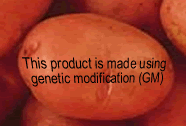|
|
||
| information policy | ||
overview Policymakers
have a number of tools at their disposal to influence market outcomes, including
taxes, subsidies, and both production and marketing regulations. In recent
years, policymakers have increasingly turned to the use of information to
influence consumer and producer behavior. Information policy involves providing
or requiring information about specific product attributes, the proper use
of a product, or best production practices. This is often achieved through
labeling and education programs. Policymakers
have a number of tools at their disposal to influence market outcomes, including
taxes, subsidies, and both production and marketing regulations. In recent
years, policymakers have increasingly turned to the use of information to
influence consumer and producer behavior. Information policy involves providing
or requiring information about specific product attributes, the proper use
of a product, or best production practices. This is often achieved through
labeling and education programs.
To help inform policymakers about the use of information policy, ERS conducts research into the theory, application, and efficacy of education programs, labeling regulations, and advertising. ERS researchers have examined the application and efficacy of information policy for a wide range of topics, including nutrition, food safety, environmental conservation, farmworker safety, farm risk management, and commodity marketing. This briefing room outlines the theory behind information policy and provides links to ERS's work in this area. More overview... contents features Traceability for Food Marketing & Safety: What's the Next Step?—When information about a particular attribute of a food product is systematically recorded, from creation through marketing, traceability for that attribute is established. Food suppliers and government have several motives for documenting the flow of food and food products through production and distribution channels—and a number of reasons for differentiating types of foods by characteristics and source. recommended readings Consumer Use of Information: Implications for Food Policy—A review of selected literature in economics, nutrition education, and marketing, highlighting several research themes, including: (1) the need to motivate consumers to use nutrition information, (2) the value consumers place on time, (3) the possibility that information can change the effects of income on food choices, and (4) the value of enhanced life and health from improved nutrition. Do Consumers Trust Food-Safety Information?—Results from a survey which asked where Americans obtained food-safety information, whether they trusted this information, and their major concerns related to food. The results can be used to select the best media for teaching consumers about food safety. Food Companies Spread Nutrition Information through Advertising and Labels—Some evidence suggests U.S. diets improved after food manufacturers were permitted to link diet to disease risks through truthful health claims in advertising and product labeling. Allowing companies to use health claims also resulted in more healthful product innovations and provided companies with incentives to compete on the health features of their products. See all recommended readings... recent research developments newsletters related briefing rooms
related links
for more information, contact:
Elise Golan
|
|
|
|
USDA / FedStats / accessibility / privacy policy / contact us / advanced search / site map |
 Information
Sways Consumer Attitudes Towards Biotech Foods
Information
Sways Consumer Attitudes Towards Biotech Foods